We spend so much money on colored pencils – but have you ever thought about the paper you’re using?
I’ve tested 20 different papers to find the best paper for adult coloring pages. Today, my goal is to help you find the best paper to make the most out of your pencils.
Check out the full video below and scroll down for my in-depth recommendations!
I’ve been making adult coloring pages for years now, and in that time, I’m embarrassed to admit that I’ve used normal printer paper for MOST of my drawings.
I didn’t think that paper mattered. I thought it was all about good quality pencils and lots of practice. So my artwork suffered. Because here’s the thing…
Even the best pencils won’t perform as well as they should if you’re using terrible paper.
As soon as I purchased some quality paper, I found my pencils were so much easier to use, and much more enjoyable. Even the cheapest pencils can perform better on quality paper – so today I’m here to help you take the confusion out of your own search for the best paper for printing adult coloring pages!
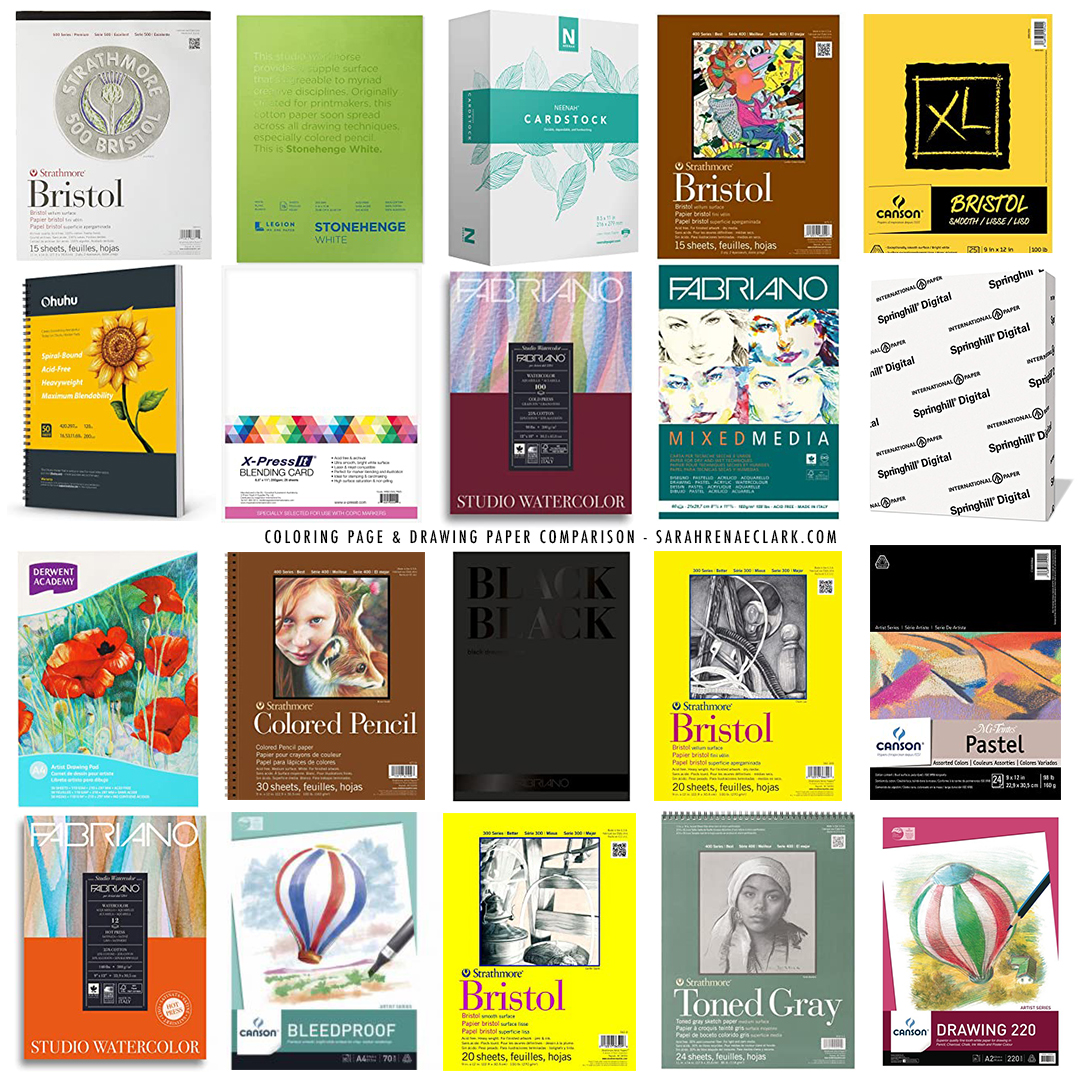
How to Choose the Best Paper for Adult Coloring Pages
First, let’s go over a few things you need to know about yourself and your project:
- Different artists will have different preferences. Your coloring technique, the brand of pencils or markers you use and even your style of art will change the type of paper you might like. That’s one of the reasons why there are so many choices available and why there’s no clear guide on the perfect paper to buy.
- What mediums are you using? Pencils and markers are the most common mediums for adult coloring, and both react to paper very differently.
- What type of printer do you have? This is something that you won’t often see mentioned in paper reviews, because they are usually aimed at pencil artists, not at printing coloring pages. And I found it to be the biggest hurdle in using many of the higher-quality papers in my coloring. More on this soon.
- And finally, your location and budget – paper is expensive to ship internationally, so some brands might be harder to find in your location and might limit what you can get. If you get stuck, find a small local art shop and ask them for recommendations.
Once you know what you’re looking for, I recommend trying a few different types of papers with the different mediums you own to get a feel for what you enjoy using the most. (I’ll suggest some of my personal favorites below!)
First, let’s look at a few different factors that will help you learn what to look for, including paper texture, weight and types of paper.
Choosing the Right Paper: Texture
This is possibly the most important thing to look for when choosing the right paper, especially if you’re coloring with pencils.
It’s the tooth of the paper (the small valleys and ridges in the paper’s texture) that allow you to build up layers of color and blend multiple colors together more easily in your coloring.
Paper texture can be smooth, rough, or somewhere in between.

Standard printer paper usually has very little tooth, so even the best pencils are limited in how much they can do.
There are plenty of paper options with more tooth – ranging from a medium texture known as a vellum finish (which is different to vellum paper), to the rough texture you’ll find in watercolor paper or mixed media papers.
Your choice of texture comes down to preference. Paper with a smooth texture are generally better for markers or pen artwork but don’t have enough texture to absorb pastels or layers of pencils.
Paper with a rough texture are perfect for pastels or charcoals, but will absorb too much of your marker ink and can use up your pencils more quickly and can leave a lot of white grain in your artwork if you don’t use enough layers.
When it comes to pencils, a medium texture is a great starting point.
Some artists prefer to use smoother papers for detailed work or hyper-realistic art, like the Strathmore Bristol smooth – these don’t allow for much blending or layering, but they do reduce all grain and produce some beautiful results, especially if you’re intending to layer your pencils on top of markers.
This might not have the tooth, but it still handles colored pencil and markers so much better than standard printer paper because of our next point… paper weight.
Choosing the Right Paper: Weight
Heavier or thicker paper like Bristol is more durable and can handle more layers than lighter paper. And if you’re using markers, watercolor pencils, solvents, or other wet mediums, the thicker paper can handle the extra moisture much better.
Paper weight is measured in lbs or GSM.
These terms are used by different companies and can be a bit confusing – and unfortunately not easy to translate, as they are based off completely different methods of measurement. So here’s the simple explanation.
LBS is the common way that paper is measured in the USA. It is calculated by weighing 500 sheets of paper in the “base size”.
The problem with this method is that not all paper types are the same base size – so this measurement changes if the paper is cut to different sizes, leading to confusion. “80 lbs” doesn’t actually tell me how heavy or thick a page is, without knowing the size of the paper as well.
GSM stands for “grams per square meter”. This is sometimes shown as g/m2
This type of measurement is always based on a sheet cut to one square meter in size. So it’s a more consistent method of measurement than lbs, because the GSM is consistent no matter what size the final paper is cut to. It is not as common in the USA but is the standard measurement used in many other countries and is becoming more popular worldwide because it is consistent and easy to understand.
The higher the GSM, the thicker the paper. Every time.
Here is a helpful infographic from Strathmore’s article on this topic that shows the difference:
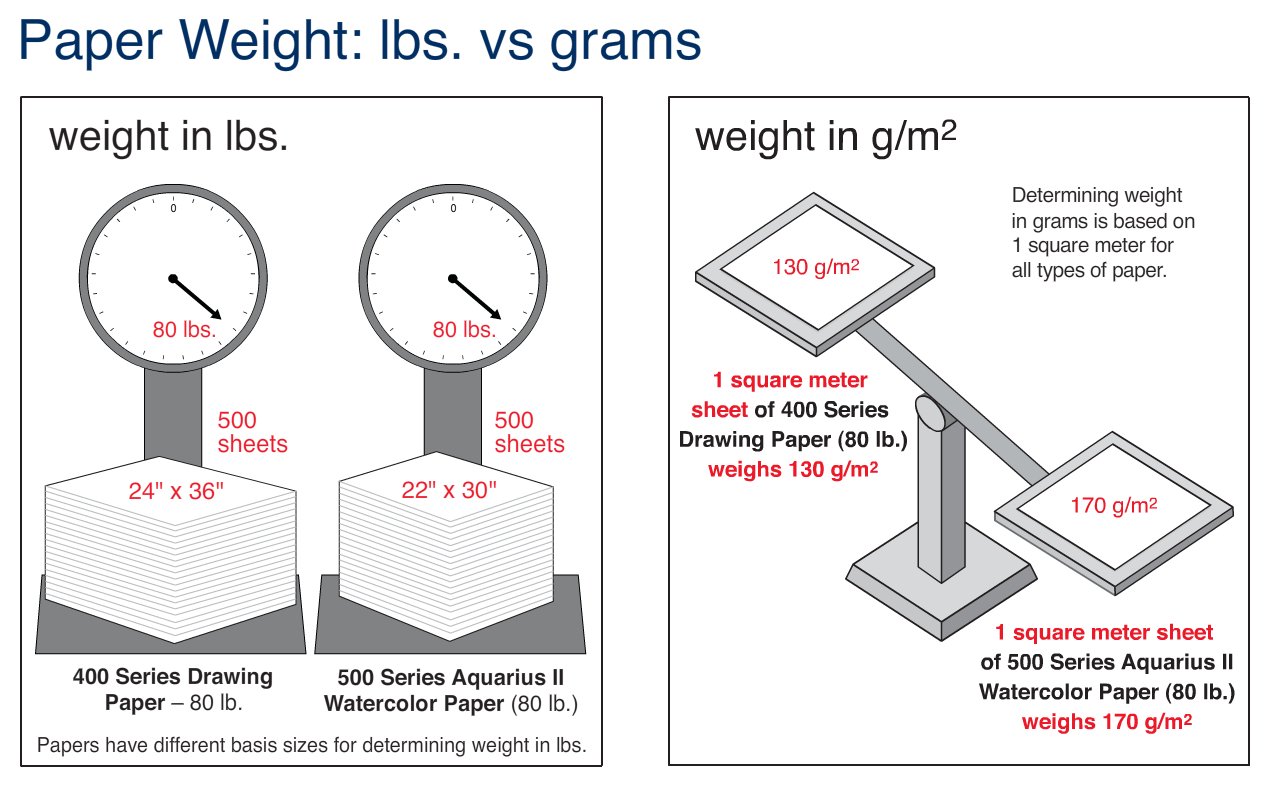
Source: Strathmore
Standard printer paper is 80 GSM or 20 lbs The higher the number, the thicker the paper.
Watercolor paper, for example, is much thicker – often 200-300 GSM.
The downside? Thicker paper is usually more expensive and can be difficult to print on – so you’ll need to test out your paper in your printer first and use a flat tray if your printer has one.
Ideally, I try to use paper as thick as my printer can handle. Thicker paper is nicer to use and handles all mediums better, as long as my printer can take it.
In fact, let’s talk about printing for a moment.
Choosing the Right Paper for Printing
Printing is the biggest hurdle I came to find when looking for the right paper for my coloring pages. And the advice online for colored pencils was aimed at artists who were drawing from scratch, not coloring something they had printed.
Every printer is different, so what works for me might not work for you.
- Find out what size your printer can take. We usually use A4 here in Australia. But most of our printers also take US Letter sized paper, so that was helpful.
- It was suggested to me to cut down larger paper to the right size for my printer – but honestly, when I tried this, my printer was too fussy and it just got jammed, no matter how accurately I tried to cut it down. So test this out for yourself.
- A flat tray or a multipurpose tray will handle thicker paper much better than your regular printer tray, so use this if your printer has one available.
There are other factors to consider as well, but many are uneccessary as a beginner and will just get confusing – so let’s instead look at some of these types of paper to talk through their differences and help you learn what to look for and share with you some of my personal favorites.
Paper Comparison:
I’ve tried to gather a good range of options from the most popular colored pencil brands recommended by artists and coloring book groups to help you find something that works for pencils, markers and within a reasonable budget. You can keep scrolling or click on one of the brands below to jump down to the specific section.
Disclaimer: This post contains affiliate links and I may earn a commission if you click them and make a purchase (at no cost to you). This post is otherwise NOT sponsored or endorsed by any of the brands mentioned or reviewed. I have purchased all of the products featured at my own cost, except the Ohuhu marker pad that was given to me by Ohuhu for a previous video.
- Strathmore 300 Series Bristol Smooth
- Strathmore 300 Series Bristol Vellum
- Strathmore 400 Series Bristol Vellum
- Strathmore 500 Series Bristol Vellum
- Canson XL Bristol Vellum Smooth
- Springhill Digital Bristol Vellum
- Neenah Cardstock Bristol Vellum
- Fabriano Studio Watercolor Cold Press
- Fabriano Studio Watercolor Hot Press 200 GSM
- Fabriano Studio Watercolor Hot Press 300 GSM
Colored Pencil Paper
These papers usually have a good weight and a good amount of tooth. They are designed specifically for working with pencils, but not necessarily for printing.
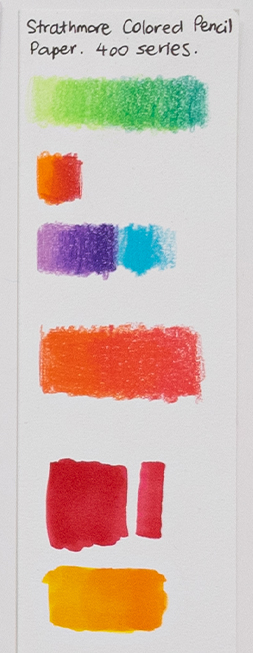
Canson Drawing 220 Pad
This paper is great for pencils, charcoal, chalk, ink wash and poster colour. I can’t seem to find it online outside of Australia, so I’m not sure if it’s branded differently elsewhere.
Texture: fine tooth
Weight: 220 gsm
Buy: Australia – Eckersleys / Art Shed Online
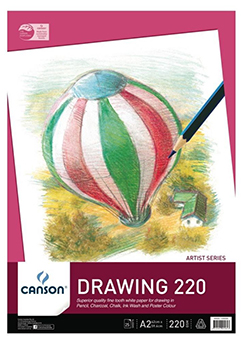
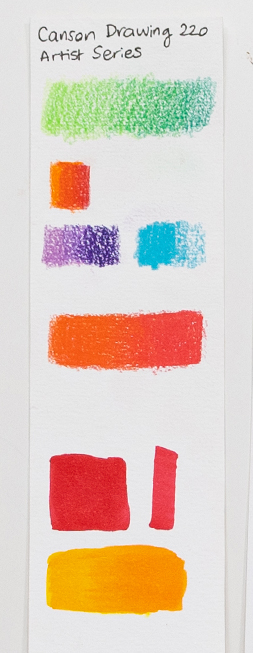
Derwent Academy Artist Drawing Pad
Texture: fine tooth
Weight: 110 GSM
Buy: Amazon AU (I couldn’t find on USA or UK sites)
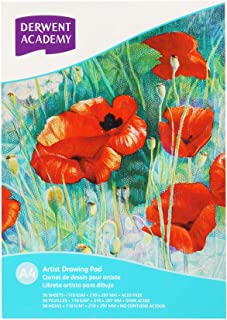
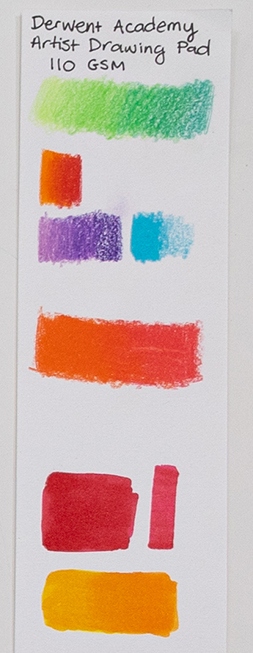
Bristol Paper
Bristol is paper that is made up of 2 more more sheets of paper that are glued together so it’s stronger. It comes in either a smooth or vellum surface. The vellum surface has a bit more tooth and so is a better option if you’re just starting out with colored pencils. However many artists like the smooth surface for hyper realistic drawings. Both types of Bristol seems to work quite well with markers and other mediums as well, so they are a great option if you’re wanting to layer markers and pencils together. The Bristol papers should definitely become a part of your collection if you’re using colored pencils.
Strathmore 300 Series Bristol Smooth Surface
Smooth Bristol is very popular for mechanical drawing, marker, airbrush work and drawing with pen or ink. However, more colored pencil artists are leaning towards this medium for hyper-realistic drawings because of the incredibly smooth finish. The surface doesn’t allow for much layering, so it does take a different approach and some practice. I’ve used this paper a few times and really like it, although not all brands of pencils are as vibrant or easy to use on this type of paper (even high quality pencils like Caran d’Ache Luminance), so I wouldn’t generally recommend it for a beginner.
Texture: smooth surface
Weight: 100 lb. (20″ x 26″ x 500 sheets) 270 g/m2
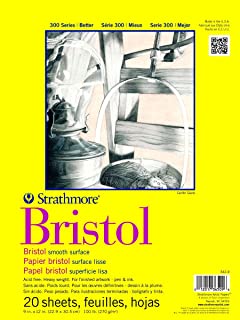
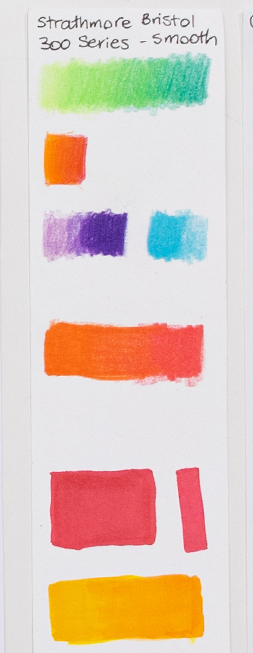
Strathmore 300 Series Bristol Vellum Surface
Vellum surfaces (not to be confused with vellum paper) are the perfect choice for colored pencil. They have a slight toothy texture to allow for layering of pencils, and they feel nice to work with, without being SO rough that they use up a lot of pencils (or markers) and have a lot of white grain like rougher papers. The Strathmore 300 series Bristol vellum is suitable for use with graphite pencil, colored pencil, charcoal, sketching stick, pen & ink, marker, soft pastel, mixed media, oil pastel, and more.
Texture: vellum surface
Weight: 100 lb. (20″ x 26″ x 500 sheets) 270 g/m2
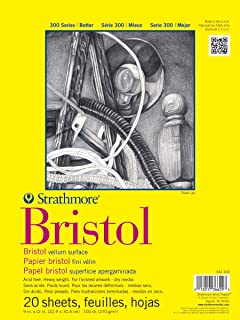
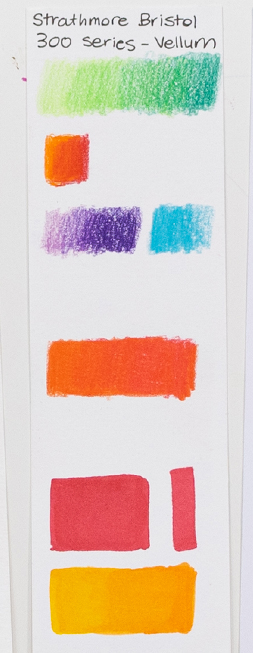
Strathmore 400 Series Bristol Vellum Surface
The 400 Series papers from Strathmore are a step-up in quality from the 300 series. You can buy both the vellum and smooth surfaces in the 400 series, but I have used the vellum surface for this comparison. Just like the 300 series, the 400 series vellum bristol is excellent for pencil, charcoal, pastels and more – It also works f0r airbrush and light washes. It is not recommended for traditional watercolor techniques.
Texture: 2-ply Vellum surface (medium)
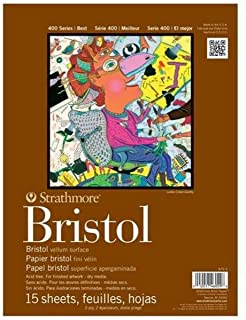
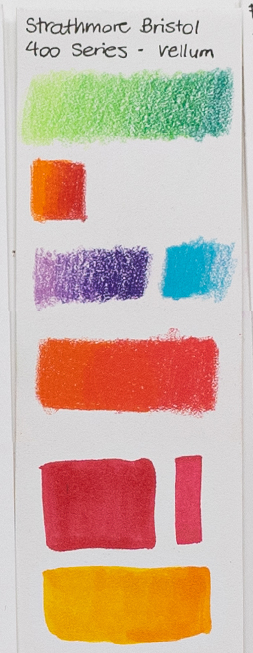
Strathmore 500 Series Bristol Vellum Surface
The 500 Series papers by Strathmore are marketed as professional-level paper – not really intended for amaeteur or hobby art. It is made from 100% cotton, is quite expensive and is one of the best papers in the industry. It comes in a variety of textures and weights. The vellum surface I’m using today has a toothy finish and is perfect for pencil, charcoal, pastel and oil pastel as well as pen, airbrush, and light washes. It isn’t recommended for traditional watercolor techniques.
Texture: Medium/Vellum (Also available as Ultra-Smooth/Plate or Slightly Textured/Semi-Smooth)
Weight: 2, 3 and 4-ply
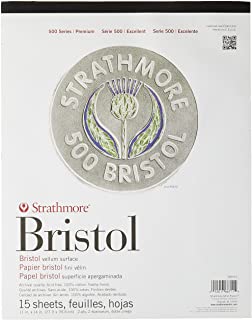
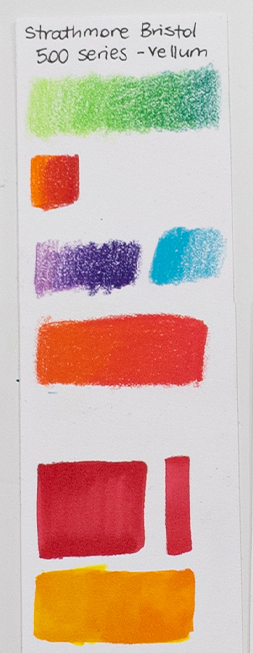
Canson XL Series Bristol Smooth
This is a heavyweight smooth surface Bristol similar to the Strathmore smooth Bristol. It works really well with pen & ink, marker, pencil, and colored pencil. The smoother surface has a bit of a learning curve for colored pencils because there is no tooth, making layering more difficult than on the Bristol vellum alternatives. It is a popular choice for hyper-realistic drawing or mixed media drawings.
Texture: Smooth surface
Weight: 100 lbs, 260 gsm
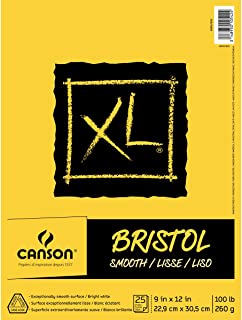
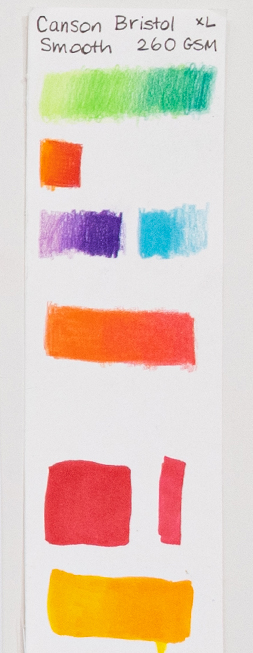
Springhill Digital Bristol Vellum
Springhill Digital is a cheaper Bristol Vellum paper that are created specifically for printing, so it is great for coloring pages. It still has the Bristol vellum surface texture of the higher quality papers, and is acid-free. It didn’t perform well with the markers (due to bleeding) but the pencils were great.
Texture: vellum surface
Weight: 67 lb
Buy: Amazon
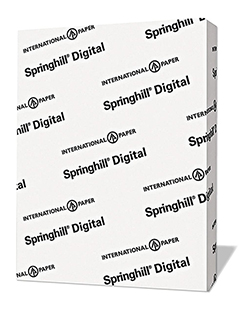
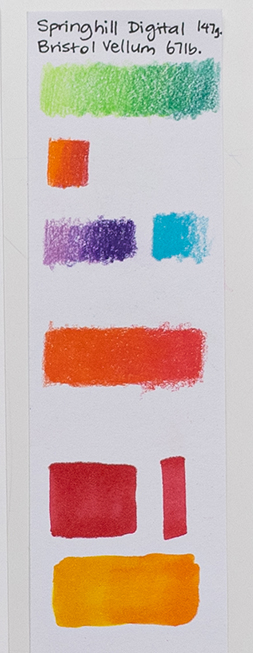
Neenah Cardstock Bristol Vellum
Neenah Cardstock is another cheaper Bristol vellum and has become a personal favorite! It is designed for printing and works with both inkjet and laser printers. The reams are affordable and it works great with both pencils and markers – I found it performed just as well as the better brands for both mediums. The main difference is the thickness- but this is why it works so well in a printer compared to the heavier-weight expensive papers. I will be using this again in my future videos and would recommend it for beginners or all skill-levels for printing coloring pages.
Texture: vellum surface
Weight: 67 lb, 147 GSM
Buy: Amazon
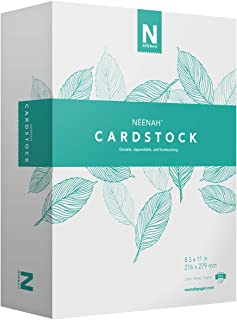
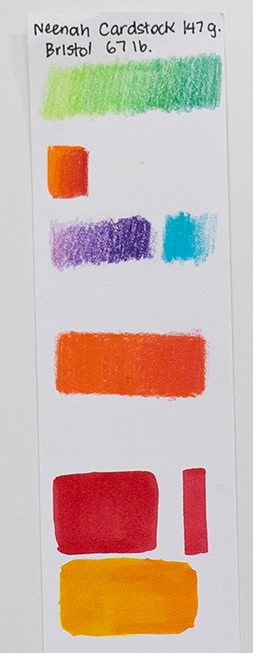
Watercolor Paper
Watercolor paper also goes through different processes to produce a huge range of different types of papers. There’s a process in paper manufacturing called “sizing” that makes the paper stronger and changes how it absorbs liquid. Without sizing, your paper would act more like a paper towel – absorbing everything with no control.
In another part of manufacturing, the paper is rolled through metal rollers that are either hot or cold, resulting in a smooth or textured surface. The hot-pressed watercolor papers almost resemble the Bristol papers, and can be really nice to use with colored pencils. Although they are often more expensive, so maybe better suited to professional art rather than coloring pages.
Fabriano Studio Watercolor Cold Press
Fabriano actually make a huge range of watercolor pads, both hot and cold press, this is just what I was able to find locally. The Fabriano Water Colour Studio paper is made with 25% cotton and is acid-free. It is sized internally and externally, and is very high quality. Ideal for water colour, tempera, gouache, acrylic, ink and drawing. The texture of cold-press papers is quite rough, so it is best for wet mediums and I wouldn’t recommend it if you are only using pencils.
Texture: rough tooth
Weight: 200 GSM, 90 lb
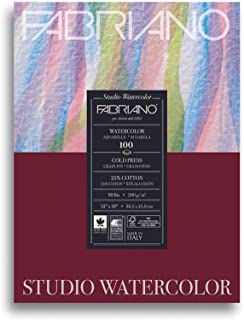
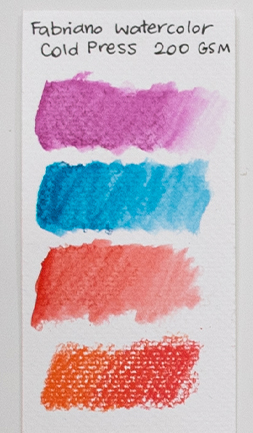
Fabriano Studio Watercolor Hot Press 200 GSM
This watercolor paper is different to the previous watercolor paper because it is hot-pressed, so the surface texture is completely smooth. This makes it perfect for colored pencils and resembles the smooth Bristol more than a typical watercolor paper. It is ideal for water colour, tempera, gouache, acrylic, ink and drawing. This paper is 25% cotton, but I’ve since realized that Fabriano also make a 100% cotton range of hot press watercolor papers – which sound amazing!
Texture: smooth surface
Weight: 200 GSM, 90 lb
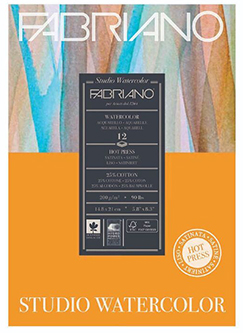
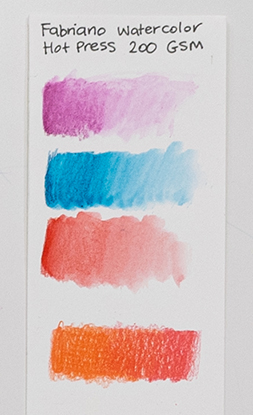
Fabriano Studio Watercolor Hot Press 300 GSM
This is the same as the above watercolor hot press paper, except that it is a higher GSM, making it a thicker weight. The surface is still the same (smooth texture) and it has the same properties otherwise. You would choose a higher GSM if you expected to use more moisture or needed your final piece to be more durable. Definitely not recommended for trying to fit in your printer! It is ideal for water colour, tempera, gouache, acrylic, ink and drawing. Also note that higher GSM usually comes at a higher price.
Texture: smooth surface
Weight: 300 GSM, 140 lb
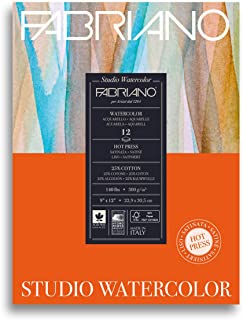
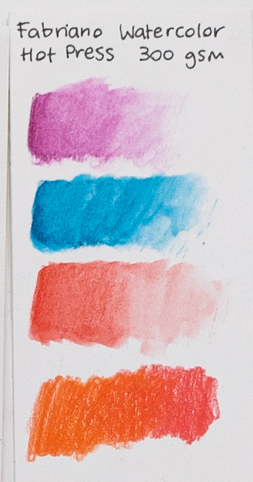
Specialty Paper (and other categories)
There are a few more papers I want to show you:
Each of these are better suited to art and drawing than coloring – but they are definitely fun to explore and get creative, so they are worth checking out if you’re wanting to expand your skills.
Strathmore Toned Gray Sketch Paper 400 series
Strathmore Toned papers come in a few different colors: Tan, Gray and Blue. Using these papers gives you the mid-range tones for your art before you begin, so you can focus on the shading and highlights. They present a unique challenge and can be fun to use and create a very interesting end result. I did find that this paper was thinner to use, so it doesn’t allow as many layers as the other papers… but it also shouldn’t need as many layers with the right technique.
Texture: medium tooth
Weight: 118 GSM
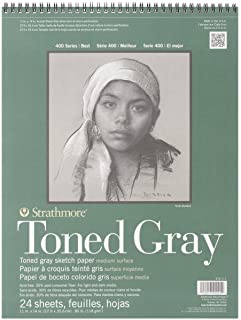
Fabriano Black Black
Fabriano Black Black is an uncoated ultra-black cardboard made of ECF cellulose pulp. The color is a very deep black and it works with colored pencils, pastels, gel pens or acrylic markers. I haven’t tried this yet, but I’m excited to give it a go soon!
Texture: smooth surface
Weight: 300 gsm

Canson Mi-Teintes
The Mi-Teintes paper range is unique because it has a different texture on each side. One side is a rough, ‘honeycomb grain’ surface, and the other side is much smoother (closer to a vellum or fine tooth finish). This is a pastel paper, but it also works with charcoal, drawing chalks, monochromes, and colored pencil (most colored pencil artists use the smoother side of the paper). It comes in 50 different colors and is one of the most high-quality papers available in the world. It comes at a high price too, but is definitely worth trying if you are looking to take your art to a professional level.
Texture: one side is rough, other side is a fine tooth
Weight: 160 GSM
Buy: Blick | Amazon (slightly different to the paper used in my example. Linked paper is white)
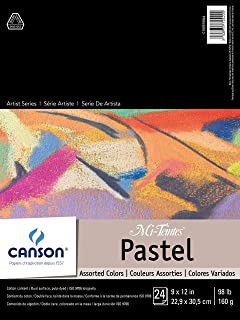
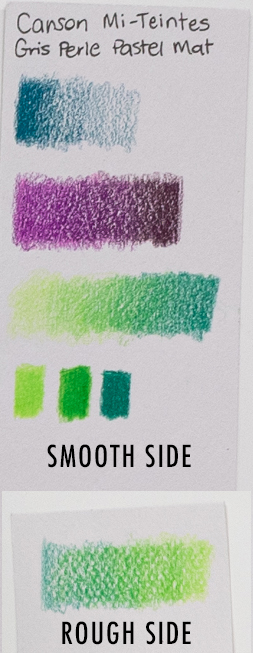
Fabriano Mixed Media Pad
This is just one example of mixed media paper – many brands make a similar product (I haven’t compared brands). Mixed media paper is produced to have qualities like watercolor paper, but with a vellum drawing surface. It is intended to be used with a wide variety of mediums and techniques, including colored pencils, markers, watercolor, acrylic paints, gouache, graphite pencils, pens, inks, pastels, and more.
Texture: rough tooth
Weight: 160 GSM
Buy: Amazon
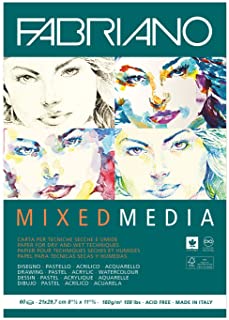
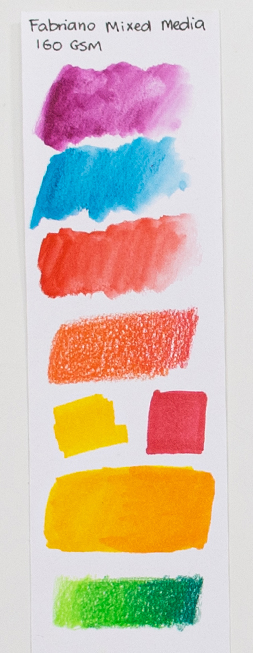
Legion Stonehenge 100% Cotton Paper
The Stonehenge Papers are another high-quality paper that has gained worldwide recognition in the art world. It can take multiple layers of colored pencil without any buildup, and works with a variety of techniques and applications. It is 100% cotton and comes in a range of colors, although it is definitely another professional level-paper that may be out of the budget for beginners. I wouldn’t use this paper for coloring pages, but I will be using it for my own drawings in the future, along with some of the other premium papers I’ve tested today.
Texture: medium tooth
Weight: 250 GSM

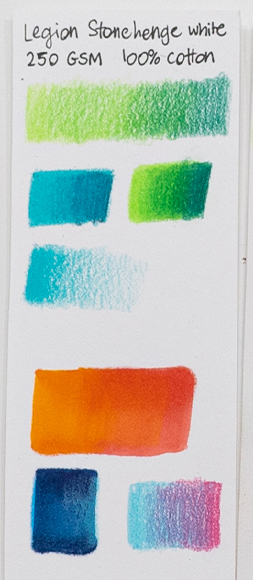
What is the Best Paper for Markers?
And since we’ve spent more of this video talking about pencils, I wanted to include a few quick recommendations specific to markers, especially alcohol markers because they tend to bleed through the page or feather on certain papers.
If you’re using both pencils and markers together, choose a paper best suited to the main medium you plan to use, and try some different papers to see what gives you the best results.
But if markers are your main medium, I recommend choosing a paper that is specifically designed for markers. Most marker paper is called “Bleed proof” or similar. These papers have a smooth surface with little or no tooth, so they aren’t suitable for many layers of pencils but are perfect for blending markers without using up too much marker ink compared to other papers.
X-Press It Blending Card
My favorite paper for my Copic markers or Ohuhu markers is the X-Press It Blending Card – it works in most printers and handles the markers beautifully. They rarely bleed through and the ink absorbs slowly enough to allow you to blend your colors, which is an important feature of a marker paper that you’ll miss out on with most normal papers. I haven’t found a paper yet that performs better than this for alcohol markers.
Texture: smooth
Weight: 250 GSM
Buy: Amazon
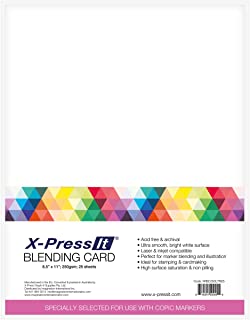
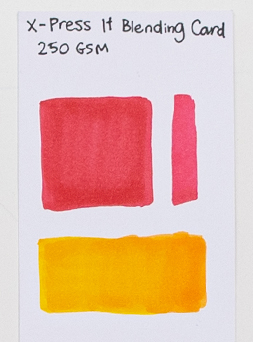
Canson Artist Series Bleedproof
The Canson bleedproof paper is semi-transparent and much thinner than the Xpress-it paper. It is almost like a thick tracing paper, and is completely bleed-proof so markers won’t go through to the page underneath. It has a smooth surface and is great for sketching with markers, pens or inks, but not very good for pencils. It’s a little to thin for printing, so it’s great as a practice pad for drawing and learning marker techniques.
Texture: smooth
Weight: 70 GSM
Buy: Officeworks AU (I can’t find this outside Australia, but Canson do offer other marker papers)
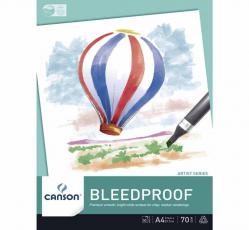
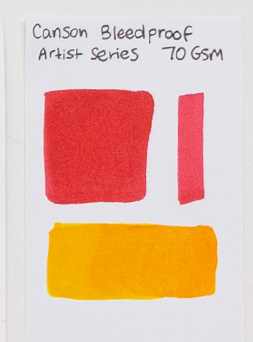
Ohuhu Marker Pad
I was given this marker pad by Ohuhu for my tutorial on how to draw skin tones with alcohol markers. This paper is nice and smooth and works really well with the alcohol markers, with no bleeding or feathering. The pages are perforated so they are easy to tear out, and I actually like the portability of the spiral binding, even though this doesn’t make it useful for printing. Ohuhu also suggest it works well with pencils, charcoals and even pastels, although I haven’t tried these for myself yet.
Texture: smooth
Weight: 200 GSM, 120 lb
Buy: Amazon
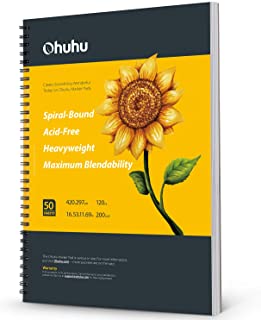
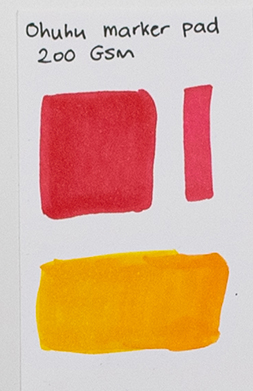
How to Choose Paper that Will Protect Your Artwork
With ANY paper you choose – there’s an important tip you need to remember if you want your artwork to last – and that’s to always buy paper that’s acid-free.
Have you ever come across an old piece of paper that looked yellow? That happens over time because of the acid in the paper fibers. Quality papers can be manufactured to be acid-free and cotton and linen papers are naturally acid-free – which means they will last over time and won’t discolor like cheaper paper.
Final Thoughts: Which Paper is the Best for Adult Coloring Pages?
This was a long post and video, so I hope you found it helpful!
When it comes to drawing, most of the papers that I’ve tested above are worth trying. They are quality paper and will produce nice results.
But if I had to recommend ONE paper for printing adult coloring pages, it would be the Neenah Bristol Vellum Cardstock.
This paper is affordable, designed for printing, and yet has many of the features of the higher quality papers for drawing.
It’s not necessarily artist-grade, but it does a pretty good job for coloring pages. It has a nice texture and a good weight. It handles both pencils and markers well without too much bleed-through, and it’s easy to find online.
You’ll definitely see me using this more often in my YouTube coloring tutorials – which you should check out if you haven’t already! Please subscribe while you’re there!
The other premium papers I’ve reviewed will be used for my more professional work – I plan to explore the cotton papers for my best artwork, and the various Bristol papers for my general art, while using the Neenah cardstock when I need to use my printer. For my marker work, I’ll still use the XPress-it paper.
If you found this post helpful, please share it with your friends or save it to Pinterest!
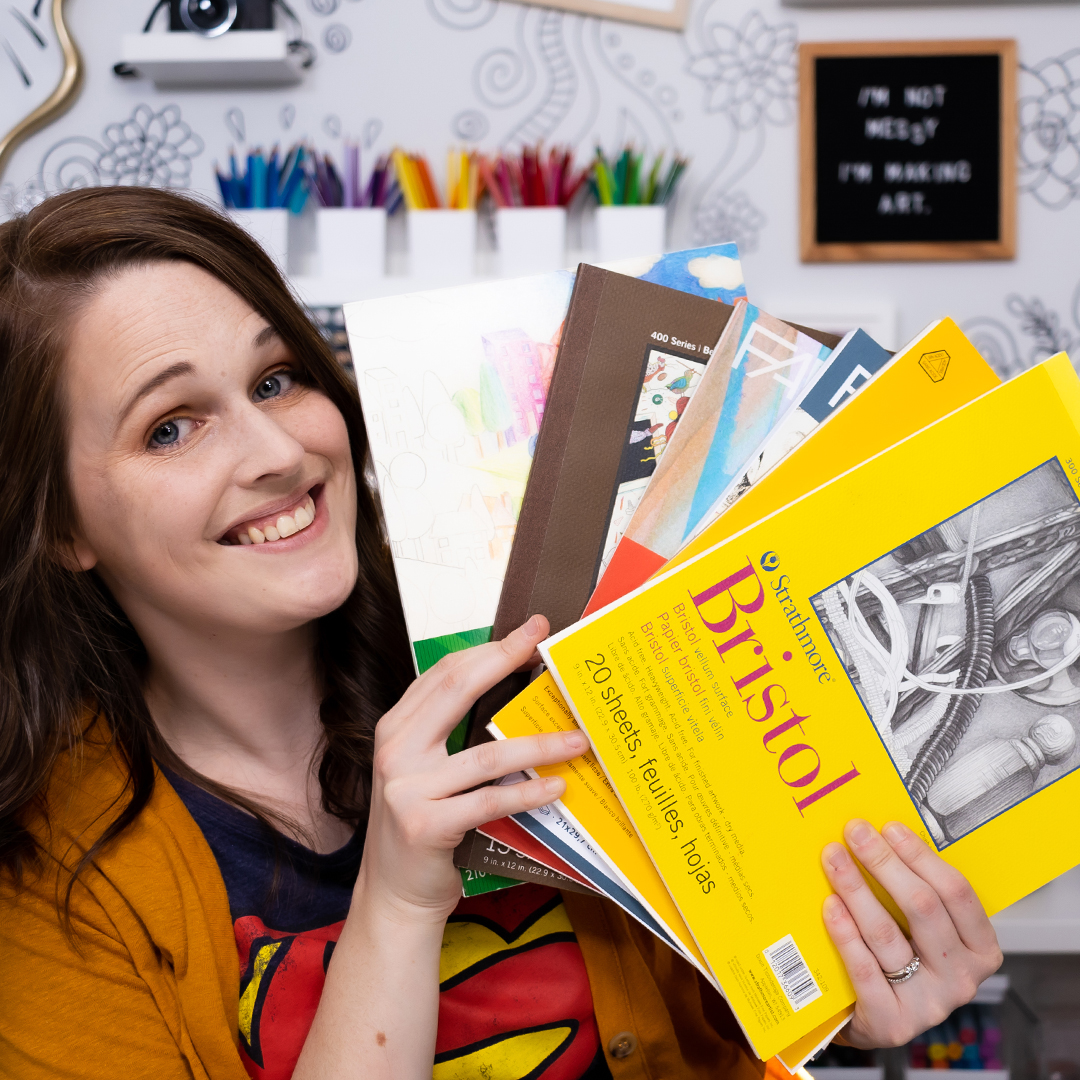
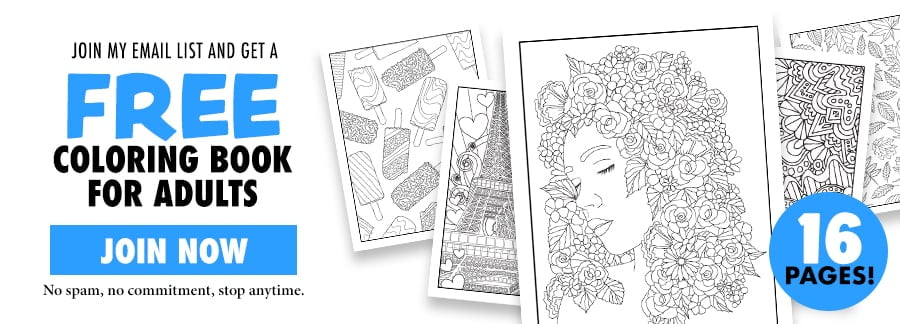

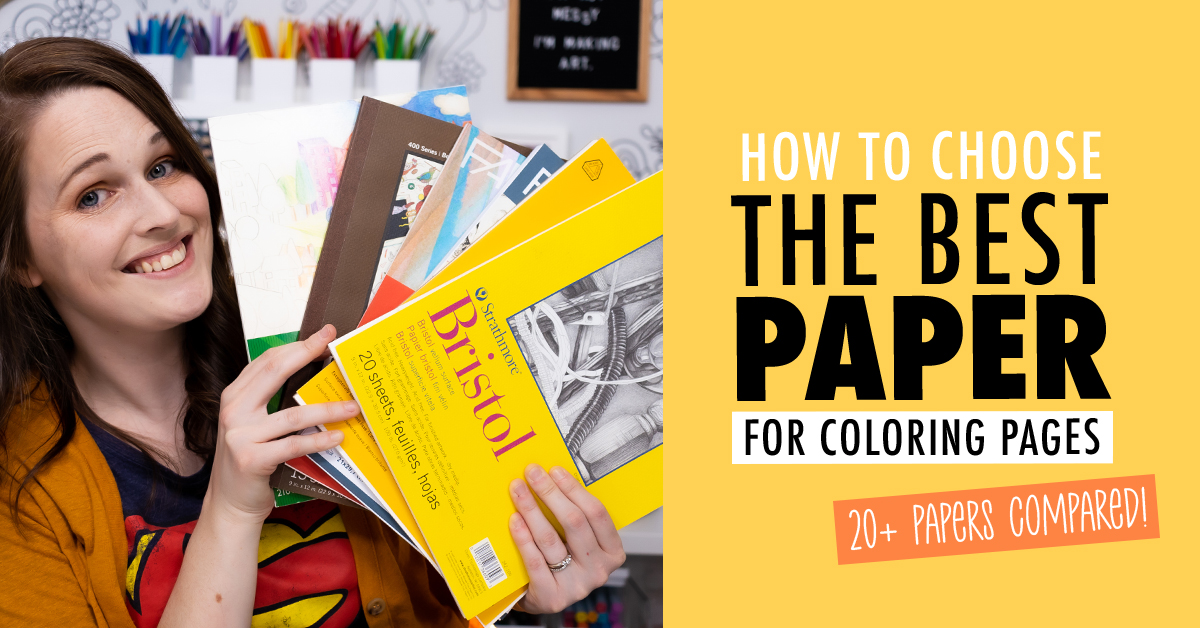

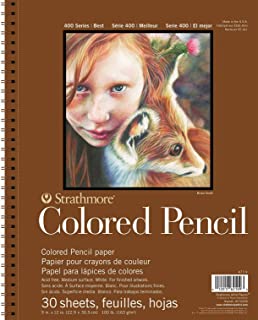


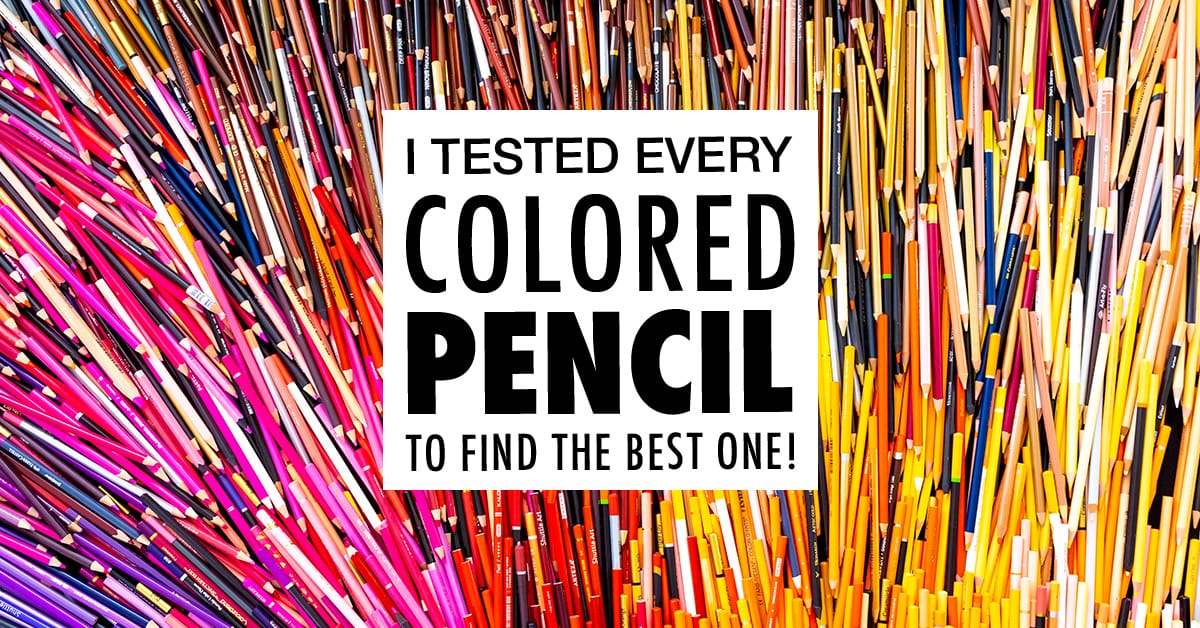
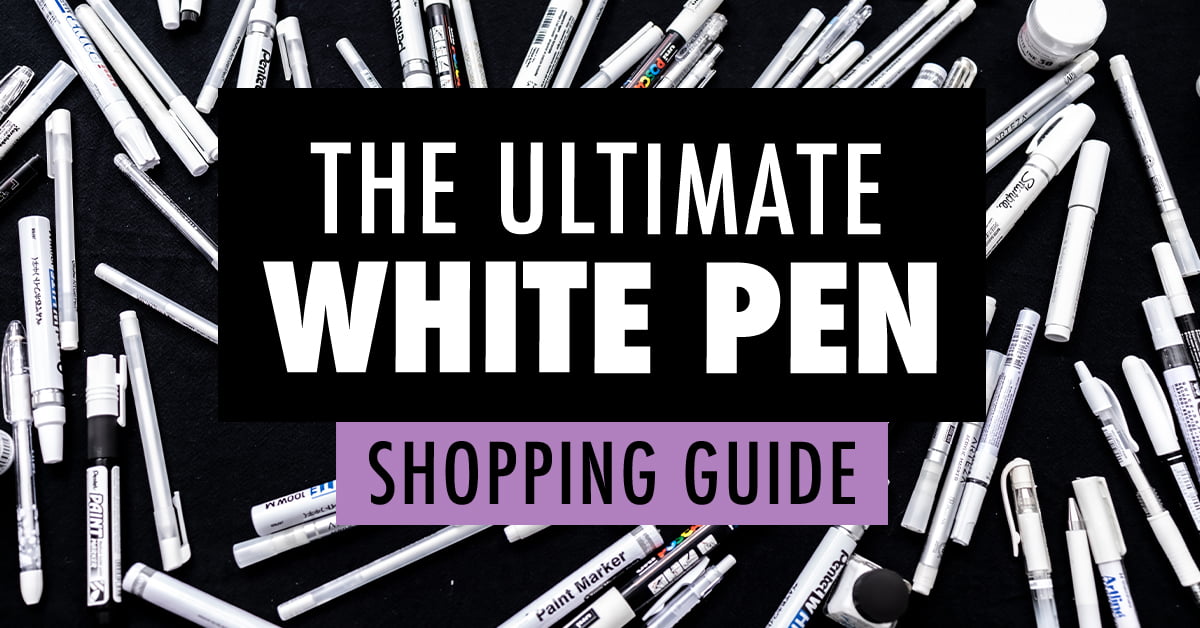
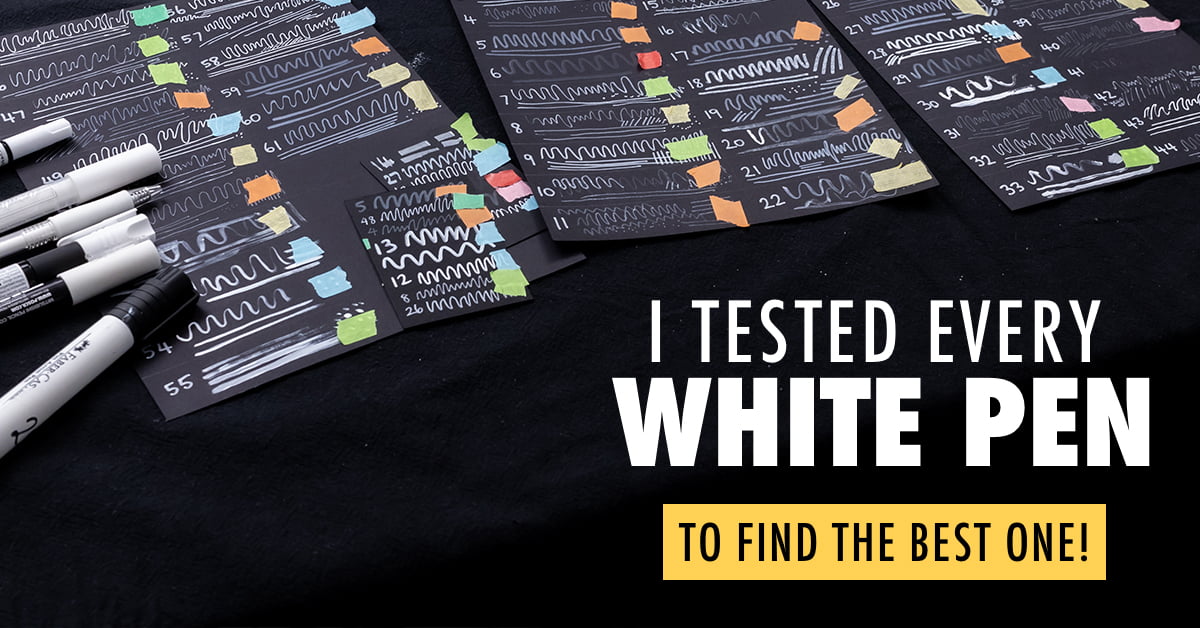
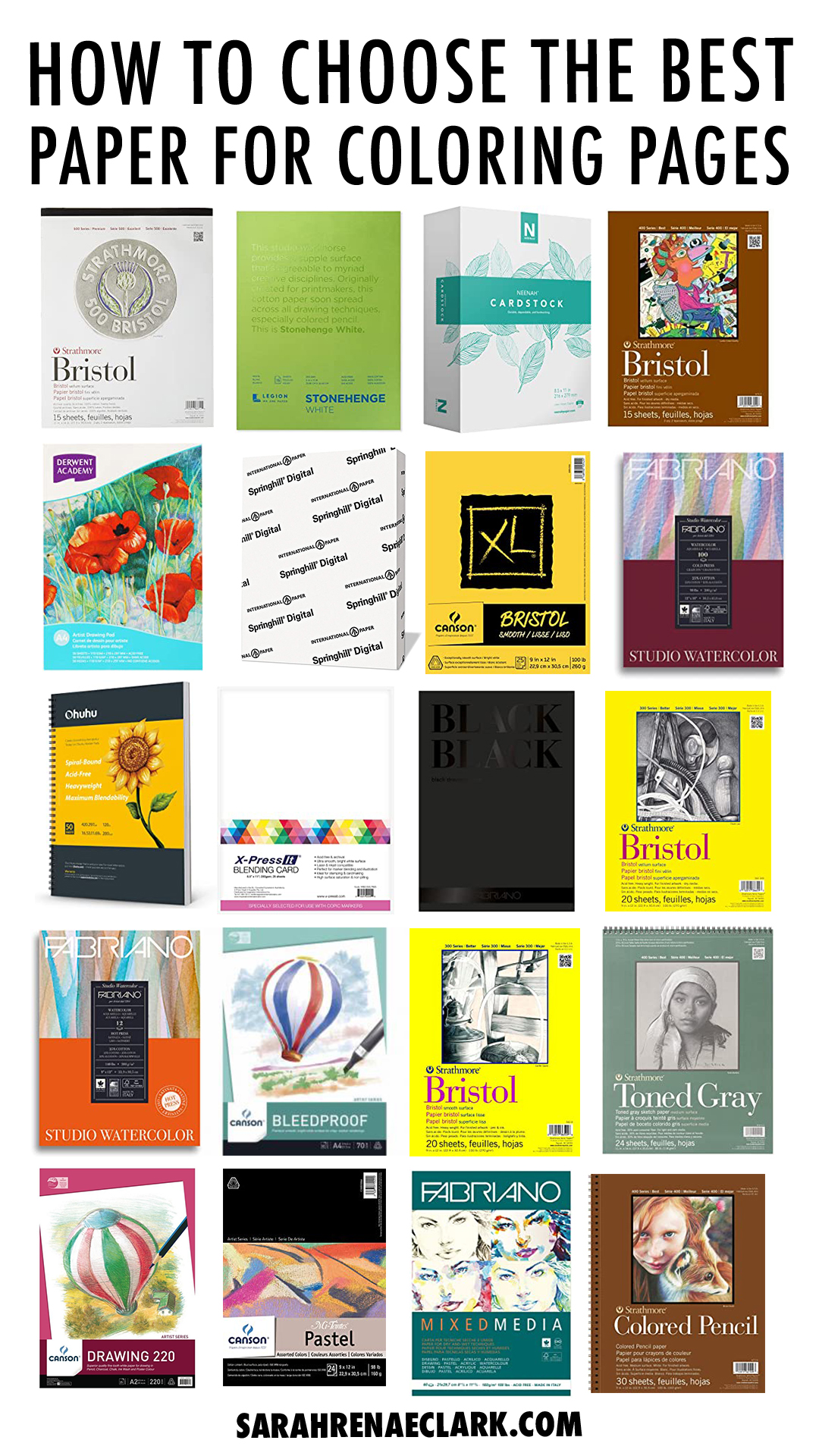
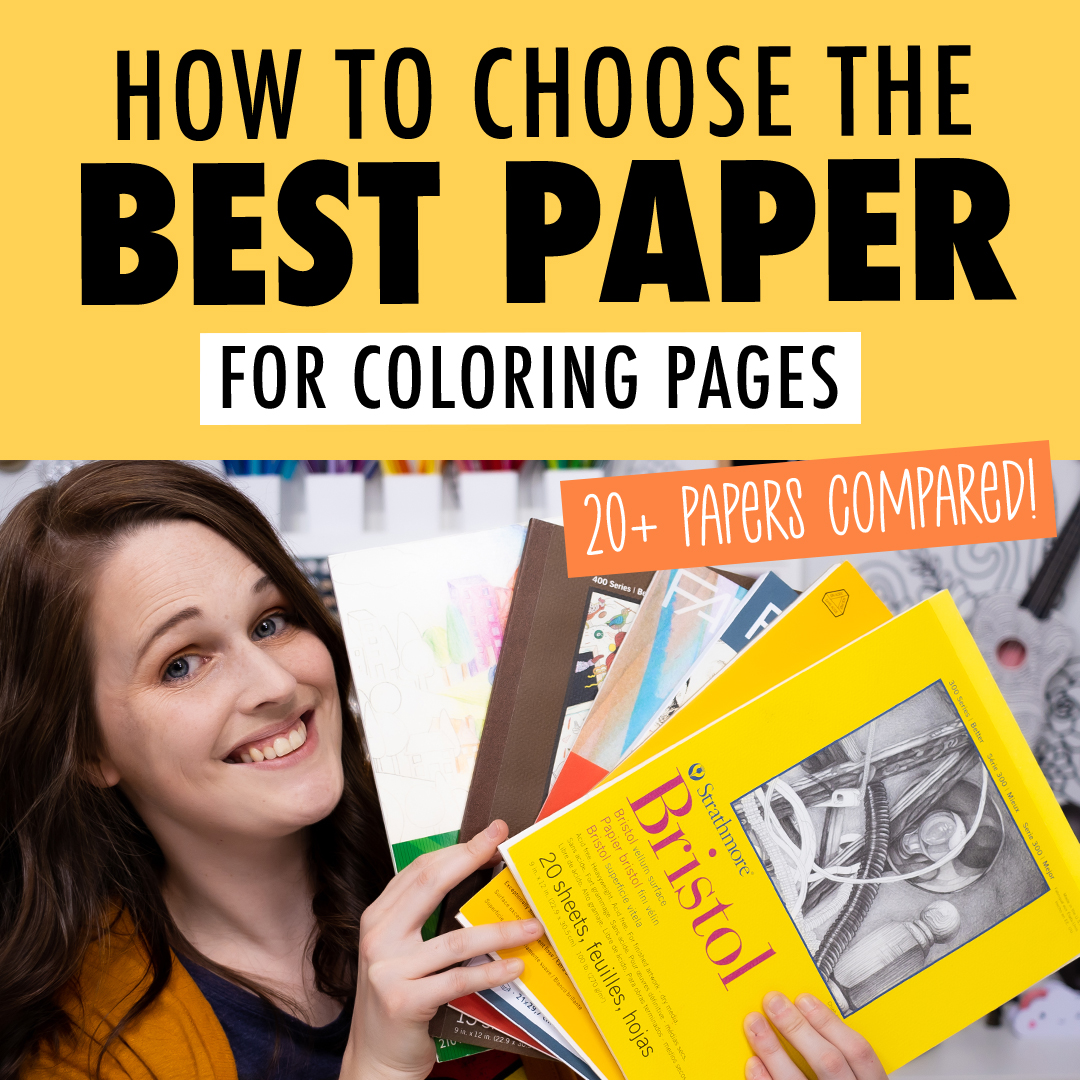
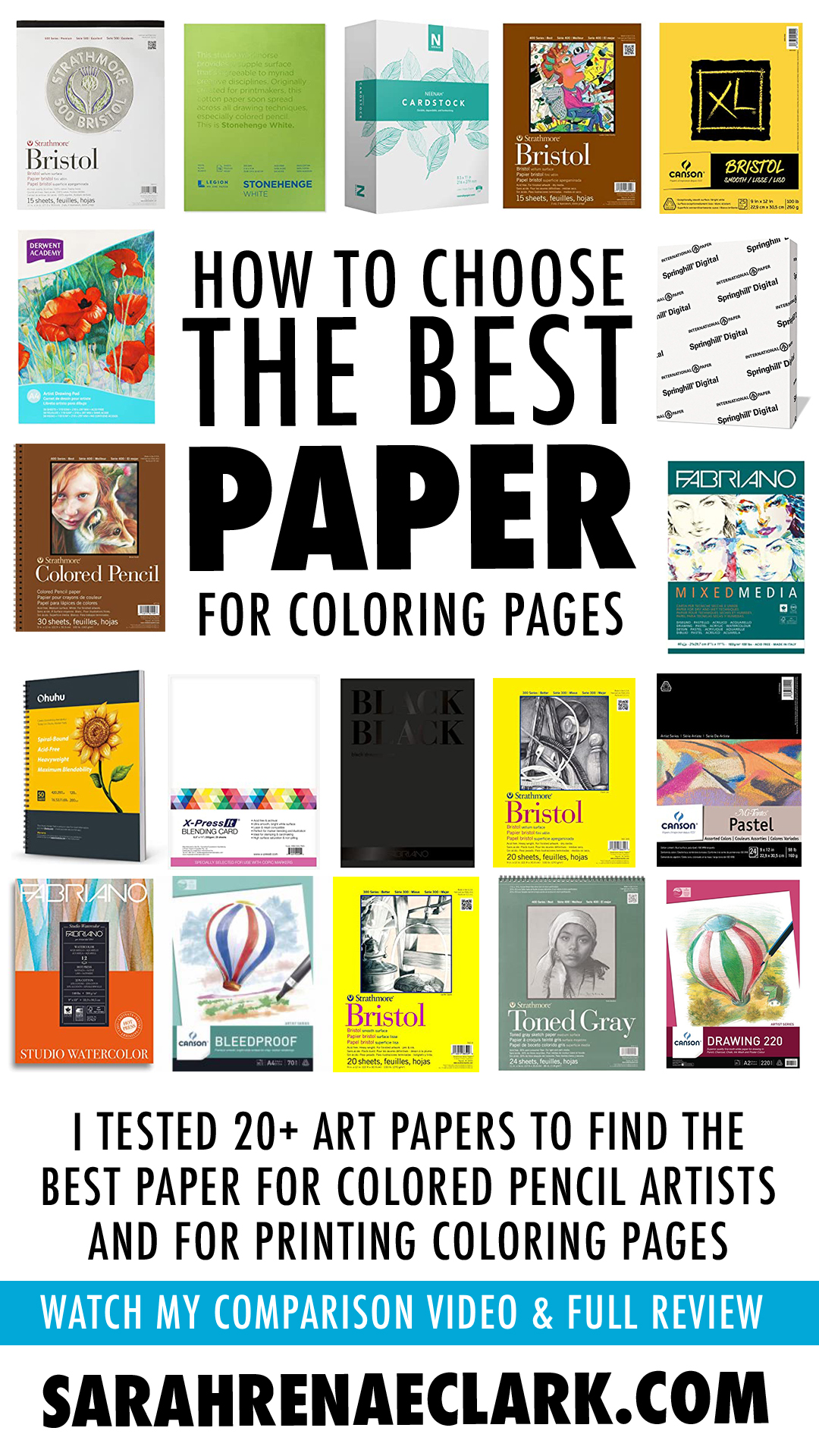
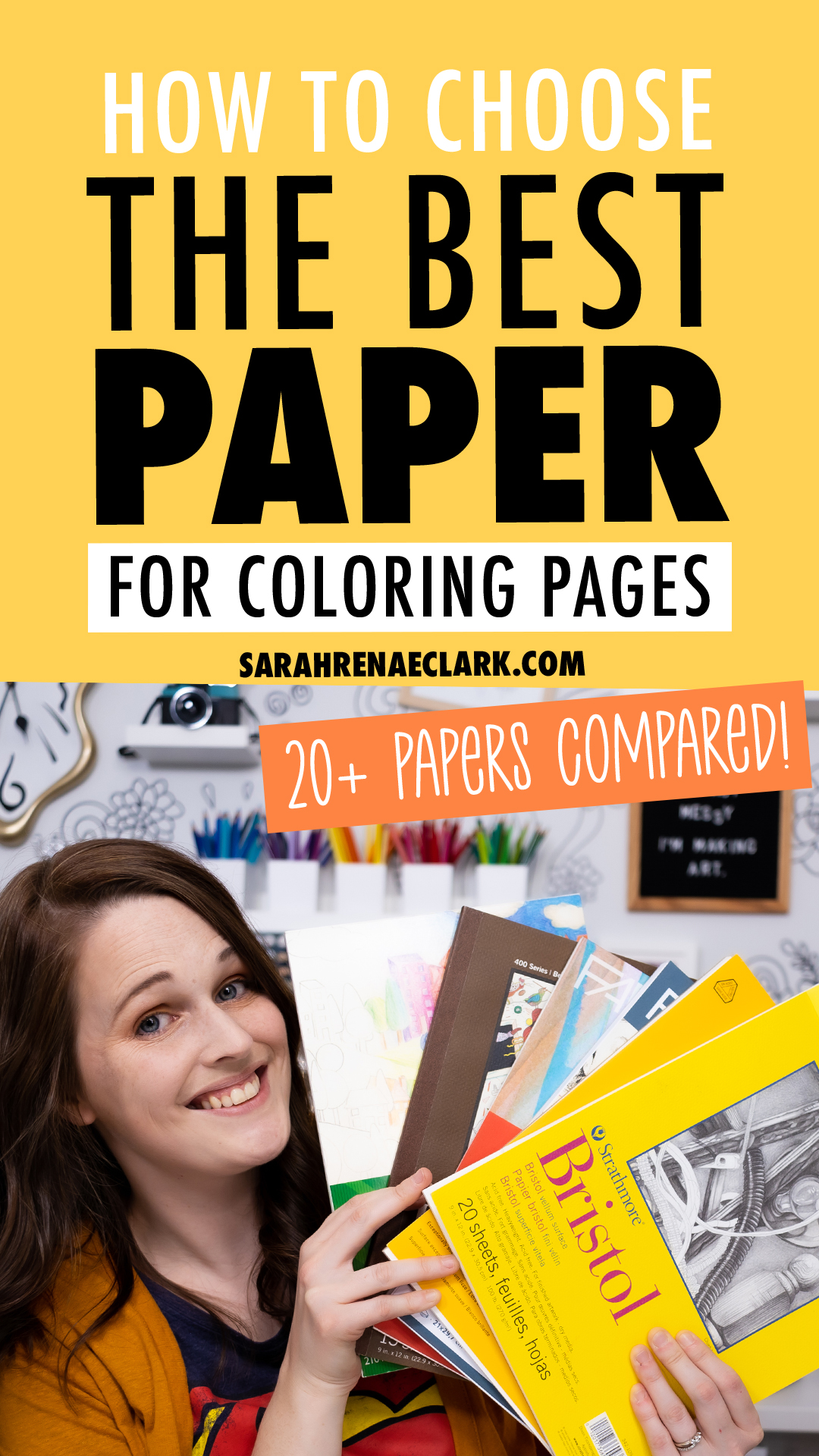
The Fabriano Black Black is my absolute favorite for my metallic/shimmer/colorshift watercolors.
Hi! Thank you so so much for this information about paper. Would you be able to send me a printable version of this information? It would come in handy when shopping rather than flipping from site to site Thanks. Stephanie in Ontario Canada.
Hi Stephanie! I don’t have it as a printable but you can print the webpage
Hi. Will the Xpress-It paper be good for marker and pencil work or is the Neenah a better choice?
Thanks for all the great videos!
Both are suitable – it comes down to preference. The Neenah will soak up the markers more, so are better if you intend to add most of the detail with pencils. But if you’re wanting the best results from the markers (and are less concerned about the pencils), try the Xpress-It first.
I am learning these essential tips on choosing the paper and printer settings and how to avoid the most common. The actual weight of a sheet of paper is commonly measured in GSM which means grams per square meter.
Good grief, what a wealth of information and all of it FREE! I received my Neenah cardstock from Amazon today but was worried I might not have received the right paper. There was no reference to “bristol” or “vellum” on the wrapper. I thought I’d found the link for it on one of your videos but was glad to find this page. I was conflicted about whether to buy Pamela’s Passion for Pencils recommendation of the Springhill or yours for the Neenah. I’m glad I got the Neenah because I have a hoard of markers I’ve never used. And my Neenah looks just like the package you showed. I can’t imagine how much time it must take to prepare materials like this & can’t thank you enough for it.
This has been the most informative video / blog I have come across so far. Thank you. Im in the process of creating my own colouring in book and trying to find the right paper to print my first few from home. The Neenah Cardstock Bristol Vellum i’m finding so hard to find but this best suites what Im after as I can get It in bulk BUT i’m needing it in a3 which is becoming a challenge.
Can you suggest another type that is good for mixed pen and pencil but a3 and can be shipped to Sydney?
Thank you again for your hours of testing for our sake 🙂
A3 will be a challenge- best to look for “colored pencil paper” instead of bristol vellum, as this term isn’t used as often in Australia, and A3 is an Australian size… It would be much easier if USA adopted A4 and A3 sizing!
Fabulous article! Thank you, will make choosing paper so much easier, especially in Australia
That’s a lot of info. Thanks for taking the time to go through this!!
Is there another paper you can recommend for people in Australia? The Neenah brand is $50 a ream including postage. That is not cheap.
A few of the options I tried are available at Spotlight. That’s the best place I found in Australia (better than Officeworks) for paper suitable for artists. However, prices aren’t much better than buying the Neenah online.
That’s only 10cents a sheet, a worthwhile investment surely. Sell some to friends to help recover outlay!
What about Mixed Media types of paper? Are there ones that maybe better than others? Would you recommend using a mixed media if you are using both colored pencils and markers? Along with printing in a printer?
I haven’t tried enough to compare, sorry! But from the mixed media I tried in this review, I actually preferred some of the other options personally
One pad/block of paper I’ve found very versatile is Canson Montval Aquarelle 200gsm 100 sheets 24x32cm, so more generous than A4 in both directions You will need a larger than A4 printer to make the most of this format (I definitely get tired of A4 format) It happily goes through my printer but check of your printer takes cardstock weight eg 180 gsm. It has a nice medium tooth and being aquarelle pits up with a bit of moisture…great for watercolour pencils.
50 cents a sheet (+freight!), you can always split the pack with a colouring buddy or use it for printmaking.
https://www.artshedbrisbane.com.au/products/canson-montval-watercolour-maxi-pad-200gsm-100-sheet
Try your local art supplier freight is frightful at moment. Or other bulk supply art stores.
(Haha, yeah, sounds like a sanitary product!)
Hey Sarah,
which weight would you recommend for printing?
And what kind of printer do you use? Which brand is it?
Thanks so much in advance :3
My printer isn’t a good example, as I’m currently using a photocopier on loan, and it’s not ideal for art. I would recommend going as thick as your printer can handle without curling the paper – most printers can handle 200 GSM but not many can go up to 300 GSM. The Neenah Cardstock I use the most (as recommended in this post) is made for printing, along with the Springhill I mentioned. Both work in most printers.
If you’re using thicker paper, you’ll need a printer with a flat-tray option.
Thank you so much for all your hard work, you do an amazing job!! I just ordered the Derwent Inktense pencils and was wondering if any of the Bristol paper would work with these, or do I need to use watercolor or multiuser paper?
The Bristol paper is quite thick, so they can work. But just go light with the water. In fact, I’ve used the inktense with an alcohol blender marker and it was a perfect combo that didn’t damage the paper as much as water!
I just watched you video. Amazing explanation.
I was wonder if you’ve seen this and what your opinion is. Linseed oil usually eats paper but because there’s wax in it I wonder if this would be ok on watercolor paper
Here’s the link https://youtu.be/lcO5ARzaZMU
What’s your recommendation for mixed media paper?
Hi, I love to color the adult coloring books, however I’ve found pages on Etsy that printables. I don’t have a copy machine an I use gel pins and crayons, which paper due you recommend for that , also suggest where to go have it printed on quality paper.
On the Neenah cardstock, do you generally use the smoother side or the rougher vellum-y side?
(Thanks for all your great reviews and videos, by the way!)
Hello from West Virginia USA! I love all of your YouTube VLOGs and your BLOG! I’ve only recently taken the time to enjoy coloring again, and I excitedly purchased your Color Cubes and Color Catalog bundle – which my daughter and I both LOVE using! While we’re enjoying the many coloring books I’ve purchased – including a few of yours – we love the illustrations, but some aren’t on ideal paper; so, I’ve been thinking of purchasing a photocopier (or scanner/printer). I saw in your reply to Fae’s comment above you are currently using a photocopier on loan, but have you thought about doing any reviews of printers for coloring? Or do you know of any you could suggest? Thank you so much for all of your products, VLOGs, and BLOGs! I look forward to them all the time now!